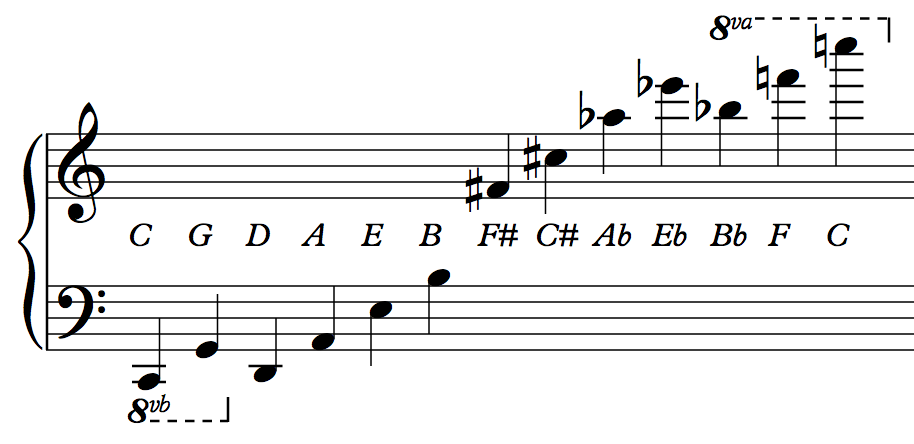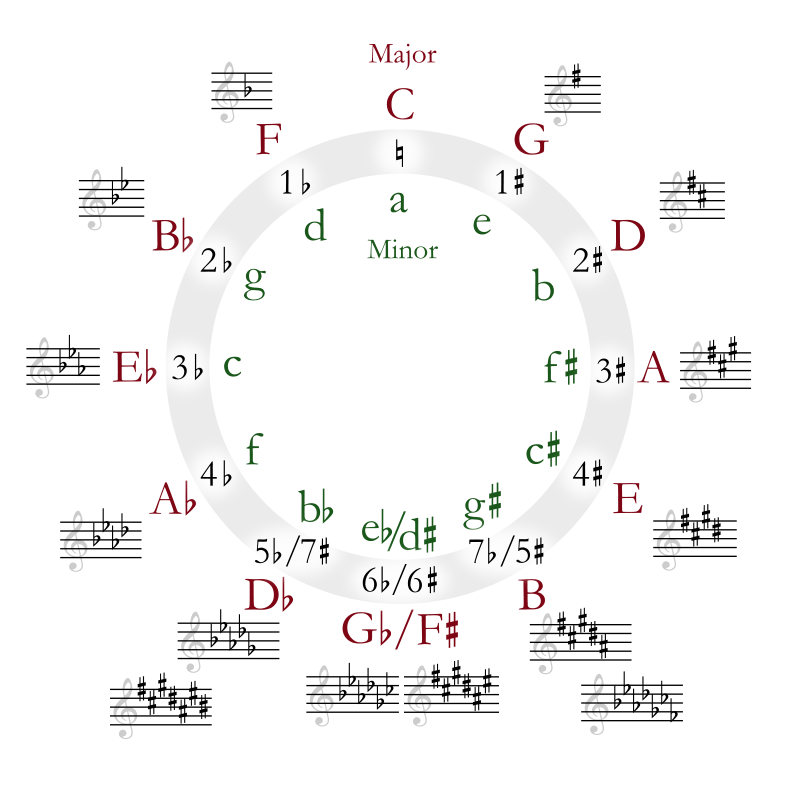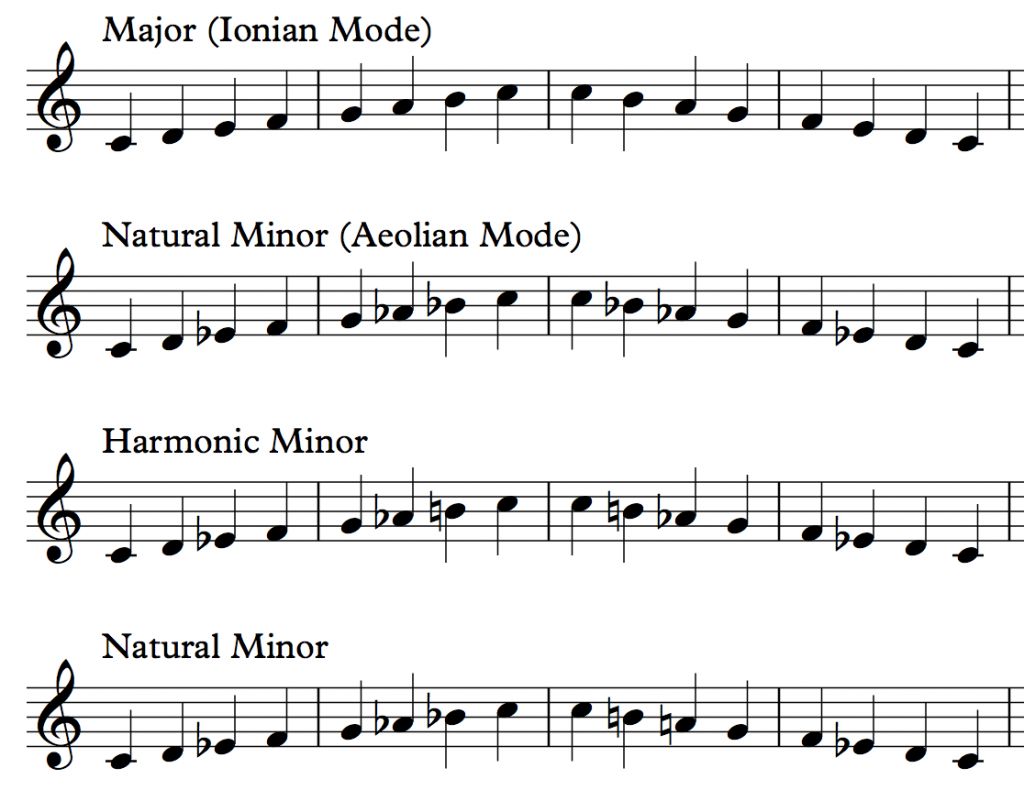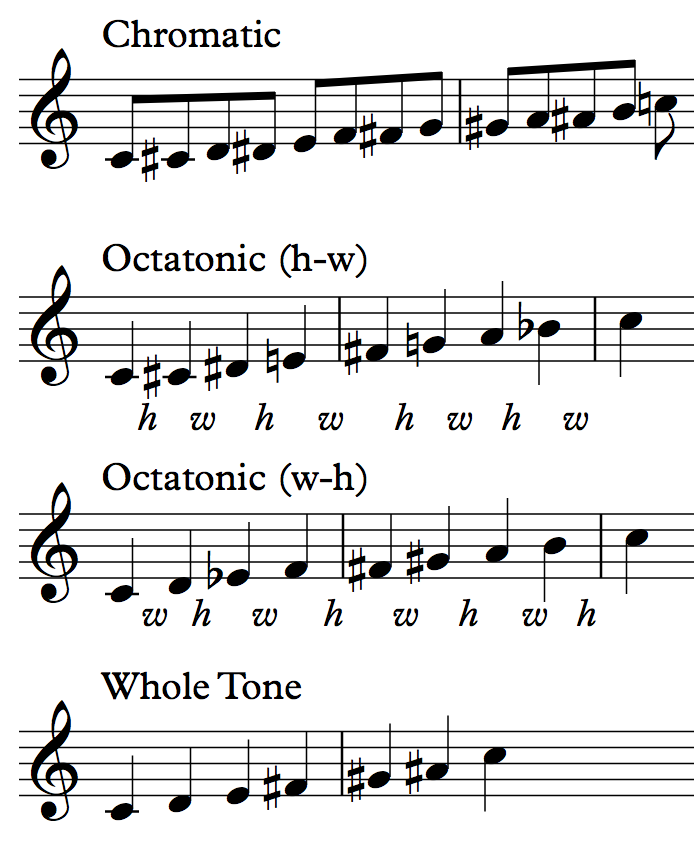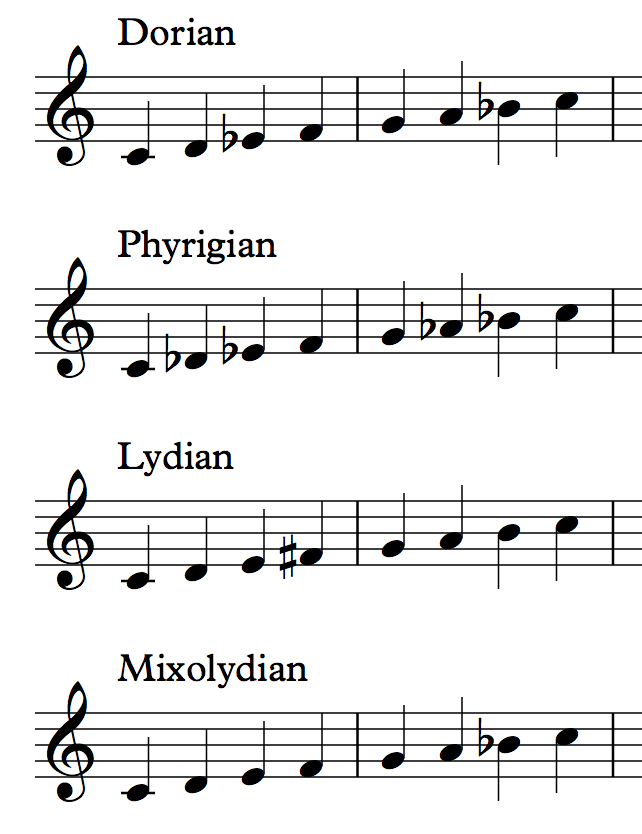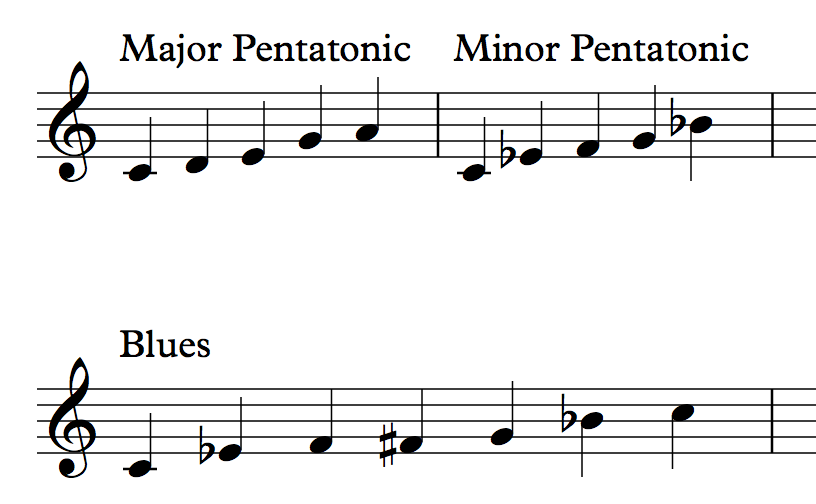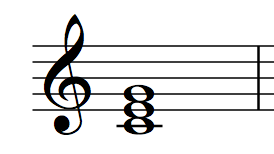By: Aaron Zimmerman
This is an ongoing series of posts called “Music Theory Rocks”, for an intro to the series and some music theory fundamentals, check out this post.
One of the eye-openingly cool things about music is the circle of fifths. A fifth (often called a “perfect” fifth) is 7 half steps. Moving by fifths up or down creates a circle that touches every note before starting over at the note you began with. If you start on a C and go up by fifths, the notes you will play will be:
As you move left to right in the above series, you add a sharp to the major scale that starts on that note.
| Key | Sharps |
|---|---|
| C Major | no sharps |
| G Major | F# |
| D Major | F# C# |
| A Major | F# C# G# |
The inverse of this is also true, as you move right to left, you subtract a sharp (or add a flat).
| Key | Flats |
|---|---|
| C Major | no flats |
| F Major | Bb |
| Bb major | Bb Eb |
| Eb major | Bb Eb Ab |
Both of these patterns will lead to the same place, and then back around, hence the name circle of fifths.
The circle of fifths is featured in Take a Bow by Muse. This piece takes a single chord progression and modulates it repeatedly downward through the circle of fifths.

Take A Bow Chord Progression
This chord progression features an Augmented triad, represented with a ‘+’. This triad is formed with a major third and a minor sixth from the root. The only other chord used is the minor IV, which is only one note different from the I+. This is a stable, easy to follow chord progression, hovering around the I chord, the lowest note never actually even changes. As the piece moves through keys, this simplicity helps the listener maintain a sense of continuity through dramatic key changes. If it were a more complicated progression, the piece would feel scattered, confusing, rather than dramatic and sweeping.
The piece is organized in two large sections separated by an interlude. The first section features the above progression modulated 6 times through the circle of fifths, starting in D Major, and ending in Eb Major. The interlude picks up in Eb and ends up solidly in F Major. The second section picks up in F Major and goes all the way through the circle of fifths to B major, where the piece ends, just three steps in the circle of fifths from the D Major the piece started in.
Here are the elapsed time marks in the piece at which modulations occur, the new key, the number of times the chord progression sounds before moving on, and any notes.
| time | key | times | notes |
|---|---|---|---|
| 0:00 | D | 2 | |
| 0:23 | G | 1 | |
| 0:34 | C | 2 | Vocals |
| 0:56 | F | 1 | |
| 1:07 | Bb | 1 | |
| 1:18 | Eb | 1+ | Vamps a little bit on the end |
| 1:40 | Interlude | See notes on interlude progression | |
| 2:13 | F | 2 | Second time guitar comes in |
| 2:35 | Bb | 1 | |
| 2:47 | Eb | 1 | |
| 2:58 | Ab | 2 | Vocals back in |
| 3:20 | Db | 1 | |
| 3:31 | F# | 1 | |
| 3:41 | B | 1 | |
| 3:53 | CODA |
